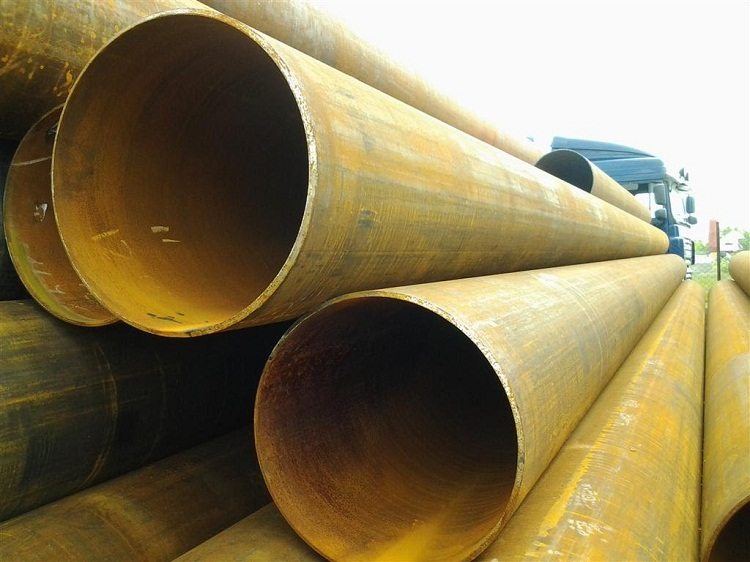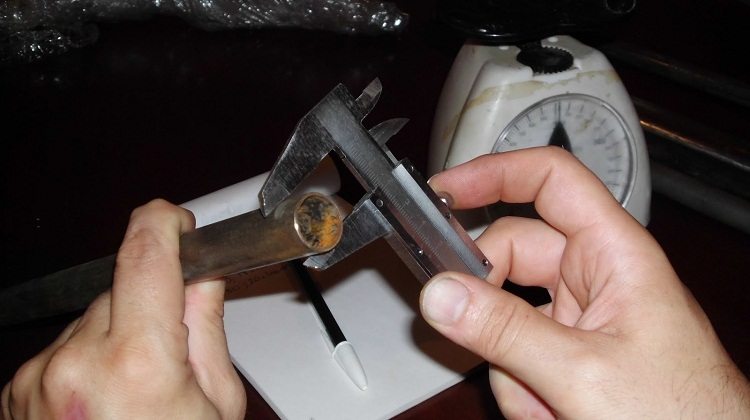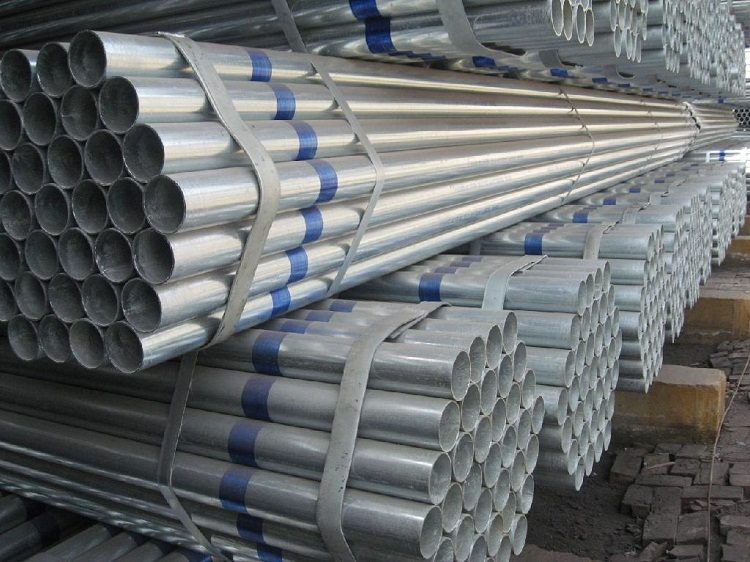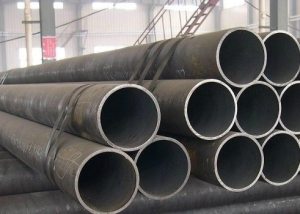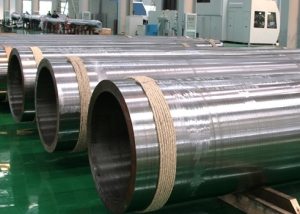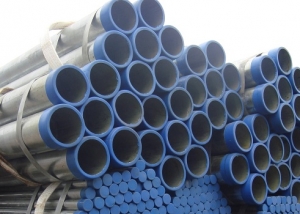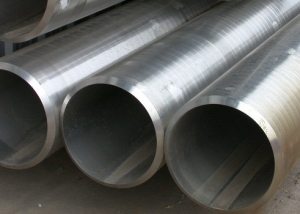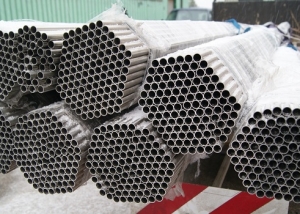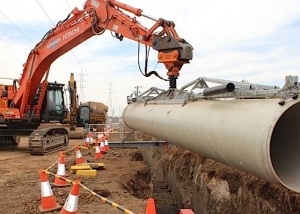Before you buy, you need to calculate the weight of the steel pipe. This is due to such factors. Firstly, similar products are sold by weight. And, secondly, the data obtained will determine the strength of the created structure. Any relevant GOST contains a table of the weight of the steel pipe indicating the standard mass of 1 m linear. However, the actual values may vary from the standard, even if the wall thickness and diameter do not differ.
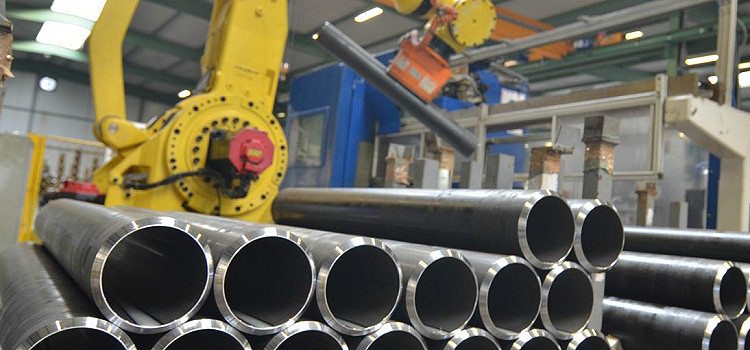
The weight of the pipe is an important parameter that must be considered when designing structures from such products.
Content
- 1 Advantages and disadvantages
- 2 An example of calculating the weight of a steel round pipe
- 3 How to calculate the weight of a pipe in a simple round way
- 4 An example of calculating the weight of a steel pipe profile
- 5 How to calculate the weight of a pipe with an unusual cross-section
- 6 Alternative calculation of the weight of 1 m steel pipe
- 7 Draw conclusions
Advantages and disadvantages
The fact that steel pipe products occupy a significant part of the shelving in any building materials store indicates that it has certain advantages compared to its competitors. Let us briefly dwell on them.
- mechanical strength. Steel pipe rolling, first of all, can be used in places where the water supply is subjected to considerable external mechanical stresses. In addition, these products are the best choice for organizing the transportation of water under very high pressure;
- relative cheapness. Of course, you cannot call a steel pipe the cheapest material. But the fact that she is one of the cheapest such products is for sure. In this case, the weight of the pipe is not assigned the main role;
- wide selection of fittings. If a fitting of the necessary shape, for example, for the same polypropylene water pipe, sometimes has to be searched, then ordinary tees or cast-iron corners in abundance are present on the shelves of any construction store;
- low linear expansion coefficient. This property is very important when the water main (no matter what, steel or from another material) is plastered or recessed into the screed. That is, when the steel pipeline is heated, cracks in such a coating will not appear.
The main disadvantages of metal tubular products, in addition to the complexity of installation and disassembly, experts include the susceptibility to corrosion and the decrease in useful clearance over time. As for the weight of 1 m steel pipe, the owner of the future water supply system will feel the great importance of this parameter at all stages of construction. Starting with the transportation of a batch of pipe products, including unloading and ending with the installation of the pipeline.
An example of calculating the weight of a steel round pipe
Regardless of which calculation method will be used, it is necessary to know the numerical values of the following parameters of a round steel pipe:
- wall thickness;
- outside diameter.
Important! One of the main characteristics when calculating the weight of a round pipe is the grade of steel.
From a high school physics course, it is known that to determine the specific gravity of a steel pipe, the volume of material used should be multiplied by its density. The last parameter is a constant value, while the volume of the material (in our case, steel) needs to be calculated. There are two methods to solve this problem. This is a calculation of the volume of the sheet forming a round pipe, or a calculation of the difference in volume between the outer cylinder and the inner cylinder.
1.To calculate the weight of the pipe (for example, with a diameter of 168 mm with a wall thickness of 8 mm) in the first way, you first need to determine the circumference:
L = π * D - 3.14 * 0.168 = 0.52752 m.
Here: D is the diameter of the product, and is the well-known mathematical transcendental constant.
The next step is to calculate the surface area. Such a calculation is carried out by multiplying the circumference of a unit of production of round pipe by its length. When calculating the weight of a meter of steel pipe in our case, the formula takes the following form:
S = 0.52752 * 1 = 0.52752 m²,
where S is the surface area of 1 m of the round pipe.
At the next stage of calculating the weight of 1 meter round pipe, the volume of steel used for the production of this product is calculated. This is done by multiplying the area by the wall thickness:
V = S * W = 0.52752 * 0.008 = 0.00422 m²
At the last step of calculating the weight of 1 meter of steel round pipe, the density of steel is determined. In a special table, the value of this parameter indicates such - 7850 kg / m³. Then the density of steel is multiplied by the volume:
P = 7850 * 0.00422 = 33.127 kg.
Table 1 shows the calculation results for the pipe products of the most common standard sizes. It must be emphasized that this is the theoretical value of the weight of one linear meter of pipe.
Table 1
| Inches | Outside diameter | Conditional pass | Wall thickness | Weight 1 m linear, kg | ||||
| Reinforced ny |
Usually venous |
Lung | Reinforced ny |
Usually venous |
Lung | |||
| 2 ½ | 75,5 | 65 | 4,5 | 4,0 | 3,20 | 7,88 | 7,05 | 5,71 |
| 2 ¼ | 57 | |||||||
| 2 | 60,0 | 50 | 4,50 | 3,50 | 3 | 6,16 | 4,88 | 4,22 |
| 1 ¾ | 45 | |||||||
| 1 ½ | 48,0 | 40 | 4 | 3,50 | 3 | 4,34 | 3,84 | 3,33 |
| 1 ¼ | 42,3 | 32 | 4,0 | 3,20 | 2,80 | 3,78 | 3,09 | 2,73 |
| 1 | 33,5 | 25 | 4 | 3,20 | 2,8 | 2,91 | 2,39 | 2,12 |
| ¾ | 26,8 | 20 | 3,20 | 2,80 | 2,5 | 1,86 | 1,66 | 1,5 |
| ½ | 21,3 | 15 | 3,20 | 2,80 | 2,5 | 1,43 | 1,28 | 1,16 |
| ¼ | 10,2 | 6,0 | 2,50 | 2,0 | 1,80 | 0,47 | 0,4 | 0,37 |
2. The calculation of the weight of one linear meter of pipe by the second method involves the calculation of the volumes of the inner and outer cylinders. The first step is to calculate the areas of the external and internal surfaces.
External area is:
SNar = π * D - 3.14 * 0.168 = 0.5278 m².
To calculate the internal area, you first need to know the diameter of the inner cylinder. It is like this: 0.168-0.016 = 0.152 mm. And the internal area is 0.152 × 3.14 = 0.4773
Further it is already possible to calculate volumes. Given the fact that this technique relates to calculating the weight of a meter of a steel round pipe, the formulas look very simple.
The volume of the outer cylinder will be 0.5278 × 1 = 0.5278, and the inner 0.4773 × 1 = 0.4773.
The difference in volumes is: 0.5278-0.4773 = 0.00505.
To finally calculate the weight of the steel pipe, it remains only to multiply the volume by density:
0.00505 × 7850 = 39.64 kg.
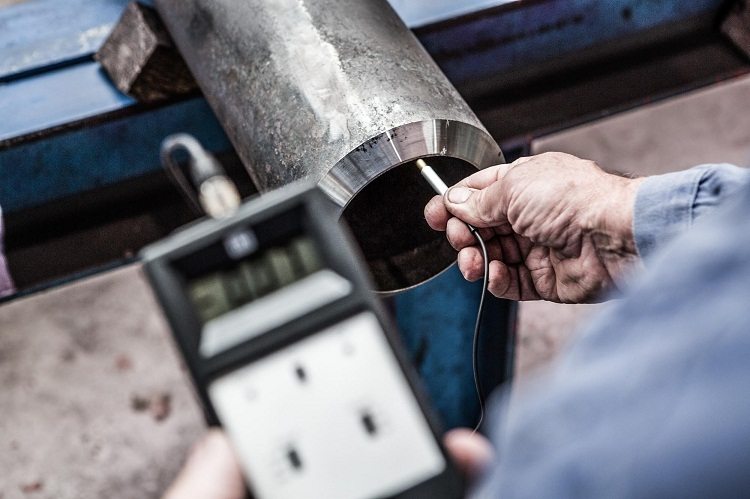
When checking pipes for compliance with production standards, small size errors are allowed, therefore, the results of calculations by formulas may not coincide with the GOST tables
As we see, the results did not match. But the difference is reasonable.
Important! If you refer to the relevant GOST, then in the table you will see a completely different value for the weight of a round steel pipe. This is due to the fact that manufacturers use the errors allowed by this document.
How to calculate the weight of a pipe in a simple round way
Although the above methods cannot be called complex, there is an even simpler way to calculate the weight of the pipe by diameter and wall thickness. The formula looks like this:
P = π * (D - Sst) * Sst* T.
Here: D is the outer diameter; St - wall thickness; T is the density (specific gravity).
In our case, it turns out:
P = 3.14 * (0.168 - 0.008) * 0.008 * 7850 = 31.55 kg.
In this way, you can find out how much a pipe of any size hangs. For example, 1 m of product with an external diameter of 75.5 mm and a wall thickness of 4.5 mm weighs:
P = 3.14 * (0.0755 - 0.0045) * 0.0045 * 7850 = 7.82 kg.
Well, in order to find out the whole mass of a steel pipe, you need to multiply the resulting number by the number of meters of pipe products used.
The final result is affected not only by the grade of steel, but also by the method of production. So, for example, the weight of a seamless product will not be the same as steel electric weldedeven if their outer diameters and wall thicknesses are the same. Indeed, for the production of each type of material, raw materials are used (meaning steel) of a certain composition, characterized by an individual density value.
And one moment.The weight of a galvanized pipe product is 3 percent more than that of a non-galvanized pipe having similar dimensions.
An example of calculating the weight of a steel pipe profile
There are steel products on the market not only round, but also with square as well as rectangular sections. First, let's talk about how the weight of a square profile pipe is recognized.
The formula for the calculation is as follows:
P = (L - Sst) * Sst*0,0316.
Here: P is the weight of one meter of steel pipe; L is the size of the side; St - wall thickness; 0.0316 is a constant coefficient found empirically.
For example, if L = 33.5 mm, S = 4 mm, then:
(33.5-4) × 4 × 0.03163.73 kg.
Now about how the weight of a pipe with a rectangular section is recognized. To do this, use the following formula:
P = (L1 - L2 - sst) * Sst*0,0158,
where L1 and L2 are the sizes of the sides; St - wall thickness; 0.0158 is also a constant coefficient determined empirically.
For example, if L1 = 40 mm, L2 = 20 mm, S = 2 mm, the weight of 1 meter of a steel rectangular pipe will be equal to:
P = (40 + 20-2 * 2) * 2 * 0.0158≈1.77 kg.
How to calculate the weight of a pipe with an unusual cross-section
Sometimes in construction products of rolled metal products are used not only with rectangular, square and round cross-section. For example, a variety of fences and railings are made from products with an oval cross section. And in mechanical engineering, they have found wide application in the creation of cooling radiators and various hydraulic systems.
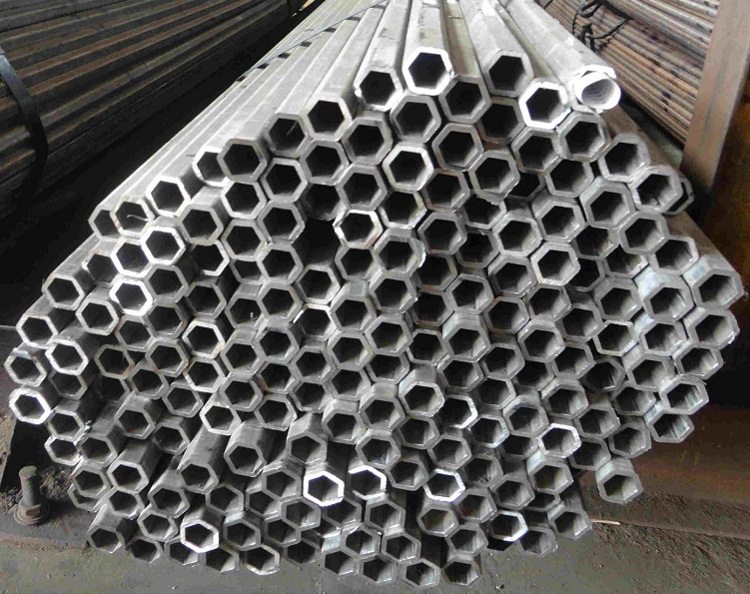
To calculate the weight of pipes with a cross-section of an unusual shape, you need to know the grade of steel from which they are made
To calculate the weight of a pipe with an unusual cross-section, you must use the following formula:
P = ρ * X * L,
where P is the mass of the product; ρ is the density of the material; X is the cross-sectional area; L is the length of the unit pipe.
This formula is useful for products with any section. In order to understand whether the products received correspond to the requirements specified in the order, it is enough to select several samples from the rental batch, measure and calculate.
Advice! If you know the weight of a batch, using this formula you can find out how many meters of rolled pipe you have been delivered: L = P / ρ * X.
The accuracy of calculating the mass of steel pipes in this way is percent. The final result depends on many factors, including steel composition, metal corrosion, uniform wall thickness, even air humidity, not to mention ambient temperature. Therefore, in order to obtain a more accurate value of the weight of a metal pipe, at least it is necessary to clarify the grade of steel and, when performing calculations, substitute its density (specific gravity) in the formula. For measurements, it is recommended to use a tool more precisely than a tape measure, especially when measuring wall thickness.
Alternative calculation of the weight of 1 m steel pipe
To determine the weight of a round pipe, complex calculations are not necessary at all. Access to the Internet will allow you to easily find and use the online mass calculator to calculate materials of both types - both round and profile.
However, in order to find out the weight of the pipe, you can do the following: just familiarize yourself with the table placed in the corresponding standard. Again, this can be done via the Internet. For example, if necessary, purchase a water pipe in the Yandex or Google search box, type the phrase "GOST 3262 75". In response, you will receive about a million options. Click on the most suitable one and on the first page of this regulatory document you will see a table of the weight of the steel pipe. You just have to find the row and column, which displays the dimensions of your pipe products. It presents the value of the theoretical weight of the steel round pipe. But it differs little from the actual one. And the most accurate mass of the pipe can be found out only by weighing.
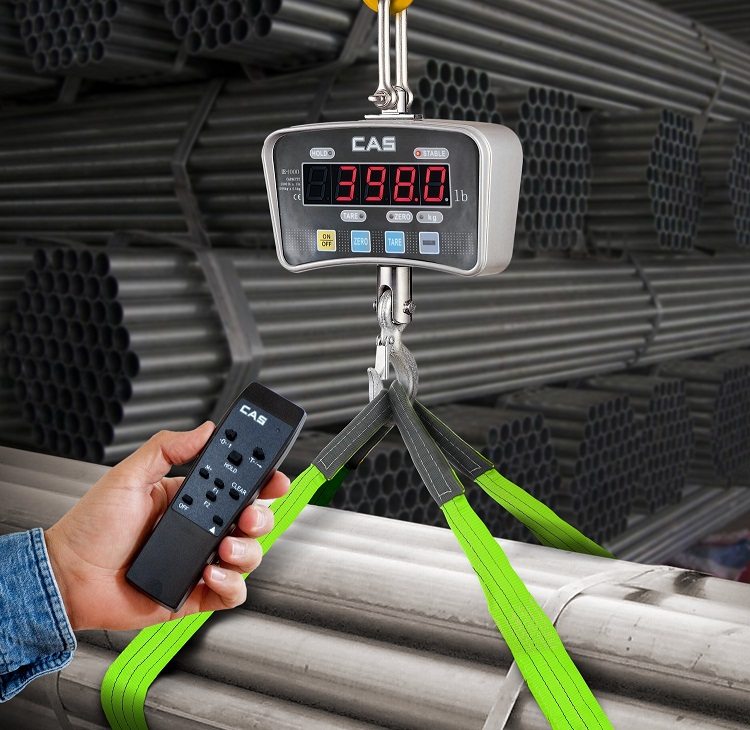
The weighing of pipes gives the most accurate result; it can be carried out with crane weights about buying a pipe at a metal warehouse
Draw conclusions
There are actually a few of them.
- different methods of calculating the weight of 1 m of the pipe give a fairly noticeable scatter of results. This is not critical from the point of view of the margin of safety of metal structures: in any case, this characteristic of steel will excessively cover deviations from the calculated mass of one meter of rolled pipe. However, when purchasing a large batch of pipes, you can make a mistake in the footage to a smaller or larger side. And this will cause the need for re-procurement or lead to cost overruns;
- When purchasing pipes, it is more advisable to rely on the numbers presented in GOST. Then, if a controversial situation arises, your arguments will be more convincing. For example, a regulatory document says that there should be 110 meters of pipe per ton of steel pipe, and there are 120 there. In this case, we can assume that the manufacturer neglected the requirements of the standards in order to save. However, the human factor is not excluded here.
Advice! A preliminary calculation will allow you to tentatively determine the frequency of installation of the supports of the outer pipeline to prevent it from sagging.
If you still have to buy pipes and this procedure is not associated with great difficulties, for reasons of economy it is better to take into account the minimum of the calculated weight values.
